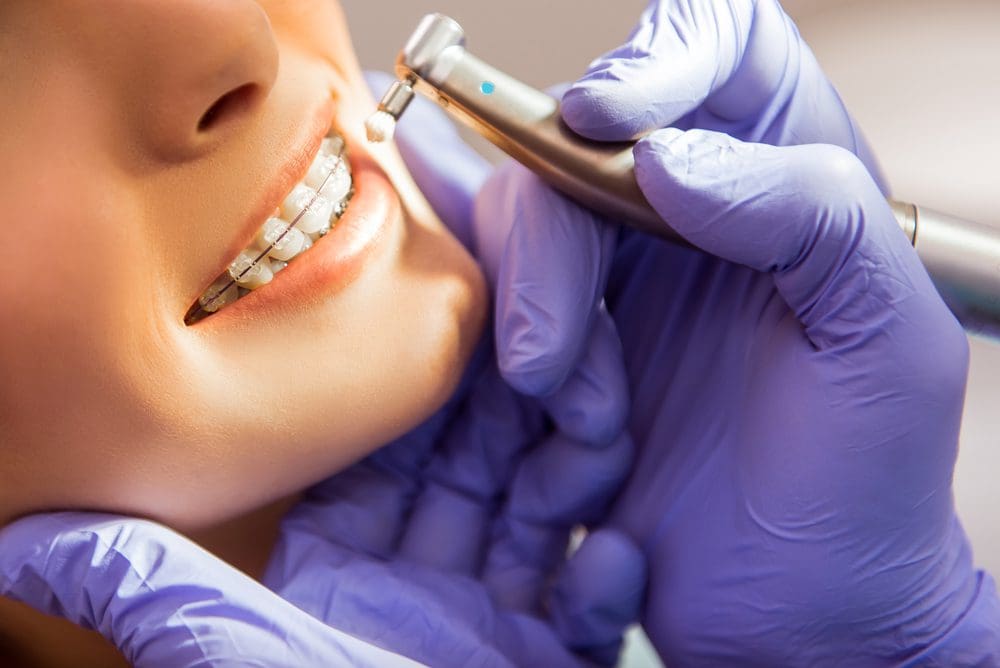Your Overview to Cumming Invisalign: Straightening Teeth with Style and Convenience
Wiki Article
Comprehensive Guide to Orthodontics Treatments for Remedying Oral Imbalances
Recognizing the intricacies of each treatment, including their mechanisms, benefits, and potential drawbacks, is critical in making informed decisions regarding one's orthodontic treatment. As we navigate through the comprehensive guide to orthodontic procedures for remedying oral misalignments, the intricate information of each approach will unfold, dropping light on the course towards a practical and harmonious oral alignment.Orthodontic Procedures Introduction

Along with conventional dental braces and clear aligners, orthodontists may likewise recommend various other interventions like headwear, palatal expanders, or retainers to attend to specific placement problems (cumming aligners). These treatments are customized to each client's one-of-a-kind demands and might entail a combination of treatments to accomplish the desired results. Routine modifications and surveillance are vital components of orthodontic treatment to make certain development gets on track and to make any kind of required adjustments in the process. By undertaking orthodontic treatments, individuals can not only achieve a straighter grin but additionally enhance their total dental health and wellness and function.
Conventional Braces: Just How They Function
When taking into consideration orthodontic treatments for oral imbalances, traditional braces attract attention as a tried and true approach for remedying teeth positioning. Standard dental braces contain braces, wires, and bands that work with each other to use constant pressure on the teeth, gradually relocating them into the desired alignment. The brackets are connected to the teeth using an unique adhesive, and the wires are threaded through the braces. By changing the stress of the cords, orthodontists can control the instructions and pressure put on each tooth, directing them into appropriate alignment in time.
As stress is applied to the teeth via the braces, the bone surrounding the teeth is improved to support the brand-new tooth placements. Patients will certainly need routine changes at the orthodontist's office to ensure the dental braces continue to apply the right pressure for efficient teeth activity.
Invisible Aligners: Benefits And Drawbacks
These clear, personalized trays are practically unseen when worn, making them an appealing alternative for individuals seeking a more cosmetically pleasing orthodontic therapy. People can remove the aligners before eating or brushing their teeth, minimizing the threat of food getting stuck in the home appliance and simplifying the cleaning process.
Surgical Orthodontic Options
Surgical treatments in orthodontics present feasible choices for addressing intricate dental misalignments that might not be efficiently resolved through traditional orthodontic therapies. While undetectable aligners and standard dental braces can deal with lots of orthodontic concerns, certain situations call for surgical intervention to achieve optimal outcomes. Surgical orthodontic options are usually advised for extreme malocclusions, substantial jaw inconsistencies, and instances where the underlying bone framework requires alteration to attain proper placement.One typical medical orthodontic treatment is orthognathic surgical procedure, which involves rearranging the jaws to remedy functional concerns such as trouble talking or chewing. This surgery is commonly done in collaboration with an orthodontist who helps align the teeth prior to and after the procedure. Surgical orthodontics might also include treatments to subject impacted teeth, get rid of excess gum tissue, or reshape the jawbone to produce a much more harmonious facial profile.
Prior to considering medical orthodontic alternatives, patients go through a thorough assessment to figure out the necessity and possible advantages of such treatments. cumming invisalign. While surgery may seem overwhelming, it can significantly enhance both the function and aesthetic appeals of the smile in instances where traditional orthodontic therapies fail
Retainers and Post-Treatment Care

Post-treatment care check this site out entails adhering to the orthodontist's directions diligently. This might include proper oral health practices, going Read More Here to follow-up consultations, and using the retainers as prescribed. Failure to abide by post-treatment treatment directions can cause regression, where the teeth slowly relocate back towards their original positions. Regular retainer wear, great oral hygiene, and regular dental check-ups are essential for maintaining the outcomes attained through orthodontic surgical procedure and making sure the lasting stability of the dealt with oral placement.
Verdict
In verdict, orthodontic treatments provide numerous choices for dealing with oral misalignments. Surgical orthodontic choices are available for extra severe imbalances. In general, orthodontic treatments can effectively enhance oral health and wellness and visual look.As we browse through the thorough overview to orthodontic treatments for correcting oral misalignments, the complex information of each technique will certainly unravel, losing light on the path towards a practical and harmonious dental positioning. - orthodontist
One of the most usual orthodontic therapies is the use of dental braces, which are composed of metal braces and cords that use gentle stress to progressively change teeth into the desired position.When thinking about orthodontic treatments for dental imbalances, typical dental braces stand out as a tried and true method for correcting teeth placing. Furthermore, undetectable aligners may not be appropriate for complex orthodontic issues that require even more substantial teeth movement, as they are commonly advised for mild to modest cases. Retainers are personalized orthodontic tools designed to hold teeth in their dealt with positions after the conclusion of orthodontic therapy.
Report this wiki page